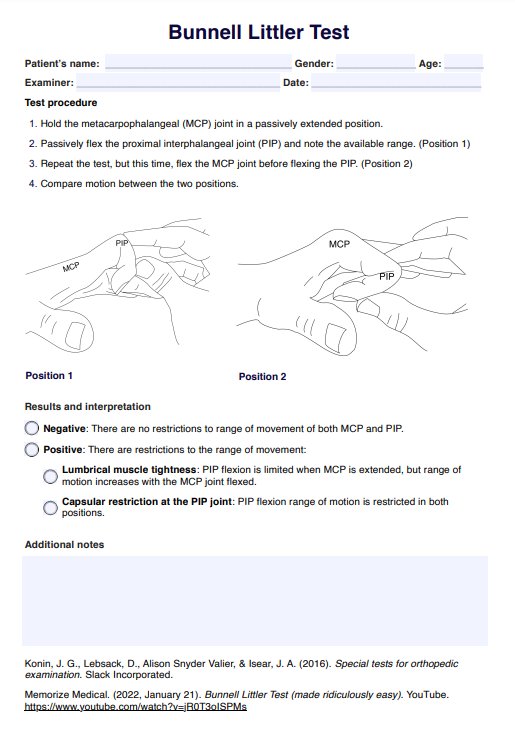The Bunnell Littler Test is commonly used to evaluate intrinsic tightness by assessing the range of motion of the PIP and DIP joints under different MCP positions.

Bunnell Littler Test
Learn how to perform the Bunnel Little Test for intrinsic tightness. Use our template for consistent assessment and easy documentation.
Use Template
Bunnell Littler Test Template
Commonly asked questions
The Bunnell Littler Test identifies whether intrinsic muscle tightness or joint capsule issues restrict PIP joint flexion.
To rule out capsular restriction, the examiner flexes the PIP joint while the MCP joint is extended and again when flexed. If the restriction remains consistent, it indicates capsular restriction.
EHR and practice management software
Get started for free
*No credit card required
Free
$0/usd
Unlimited clients
Telehealth
1GB of storage
Client portal text
Automated billing and online payments











